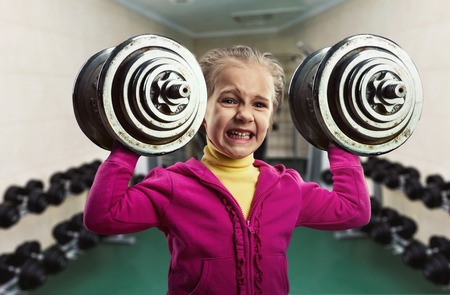Exercise physiologists don’t know much about the effects of resistance training concerning the risks and potential benefits on pre-adolescent children. However, the primary concern is the risk of overloading muscles and skeletal structures of the body and causing epiphyseal fractures, acute low-back trauma, lower-back bony disruptions, and ruptured intervertebral disks. Also, a child’s hormonal profile lacks full development, especially the tissue-building hormone testosterone. Thus, it is important not to treat children like adults when training them and to be particularly cautious about overloading their bodies with too much weight and/or too much exercise, i.e., volume. Consequently, a parent may question whether or not a resistance-training program for their child may or may not induce significant improvements in strength.
The initial and primary benefit of exercise and resistance training for children can help them in developing coordination skills in addition to building strength. We do know that a closely supervised resistance-training program that utilizes concentric-only muscle actions with low resistance and high repetitions significantly improves muscular strength with no adverse effects on muscle, bone, or connective tissues. Concentric-only exercises are exercises that shorten the muscle. An example is the upward motion in a biceps curl.
Below are general guidelines for resistance exercise training and progression for children and adolescents.
Age and Training Considerations
Up to 7 Years
At this age, simply introduce the child to basic exercises with little or no weight. It is important to develop the concept of a training program or session and to teach and emphasize exercise techniques. Also, very gradually progress from body weight calisthenics and partner exercises to lightly resisted exercises. It is important to keep the training volume low. Children are not professional athletes, do not expect them to perform like one.
8-10 Years
Gradually increase the number of exercises. Practice technique in all exercises. Once good technique is learned, a gradual and progressive loading in each exercise can be accomplished. It is important to keep all exercises simple and to slowly increase training volume. Carefully monitor the child’s tolerance to each exercise and its induced stress.
11-13 Years
Teach all basic exercise techniques. You can continue progressive loading of each exercise, but emphasize technique rather than load. Again, do not overload the child and monitor load stress, i.e., load should not be so heavy that the child is groaning in his or her attempt to lift the weight. Introduce more advanced exercises, but use little or no resistance for them.
14-15 Years
Continue gradual progression to more advanced exercises and begin to add sport-specific skills and components. It is very important to emphasize technique as you increase volume.
16+ Years
Graduate your child to entry-level adult programs after all basic and advanced exercises have been taught and the child has good technique and shows a mastery of the exercises through his or her training experience.
As with all training programs, it is important to gradually increase intensity. Technique should always take precedence over weight load. And, obtain a physical check up for your child from a doctor before starting him or her on a training program.






